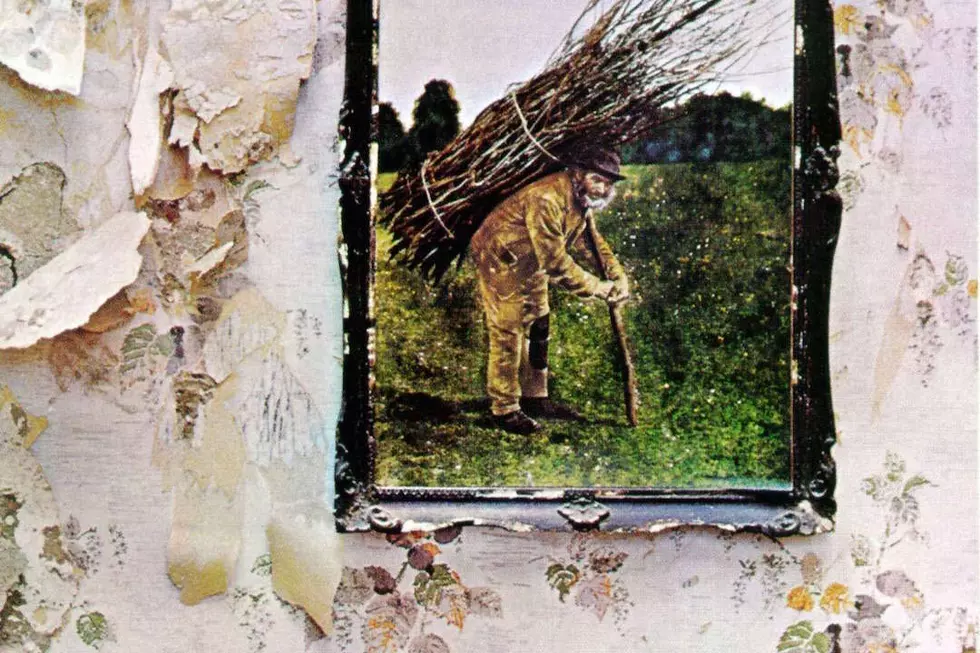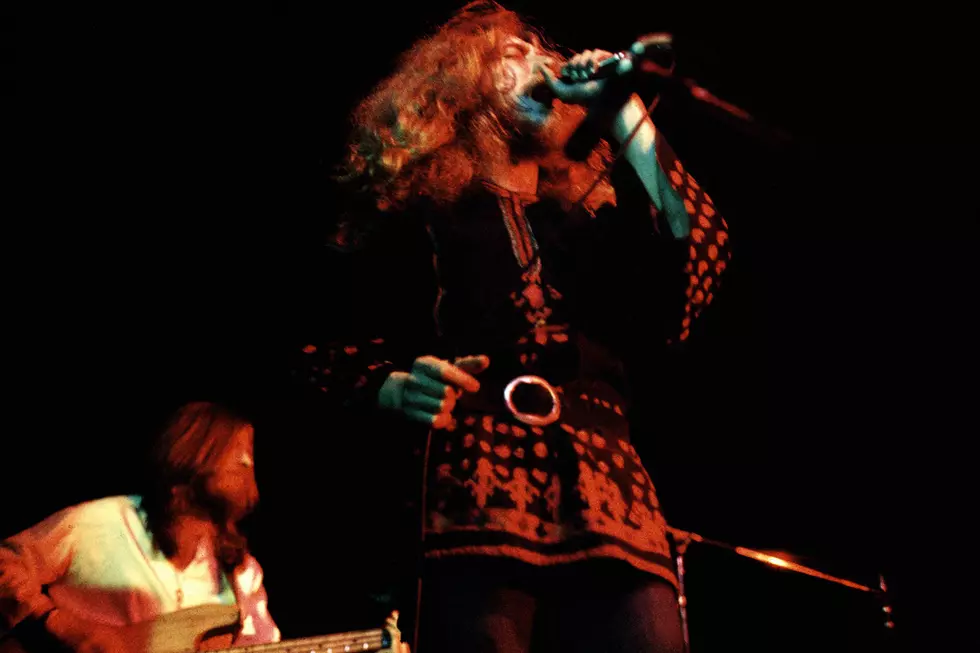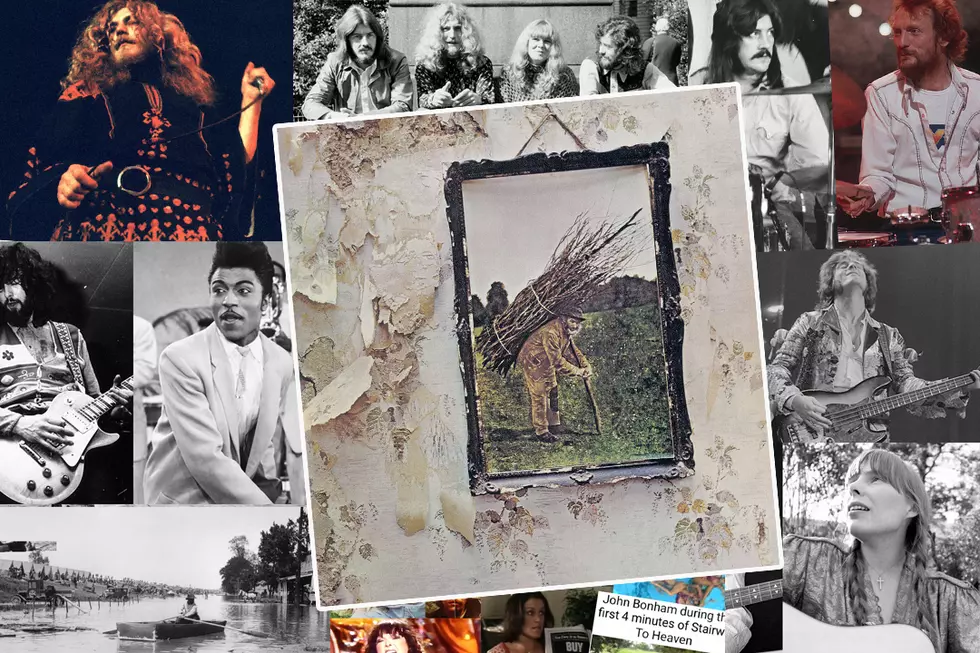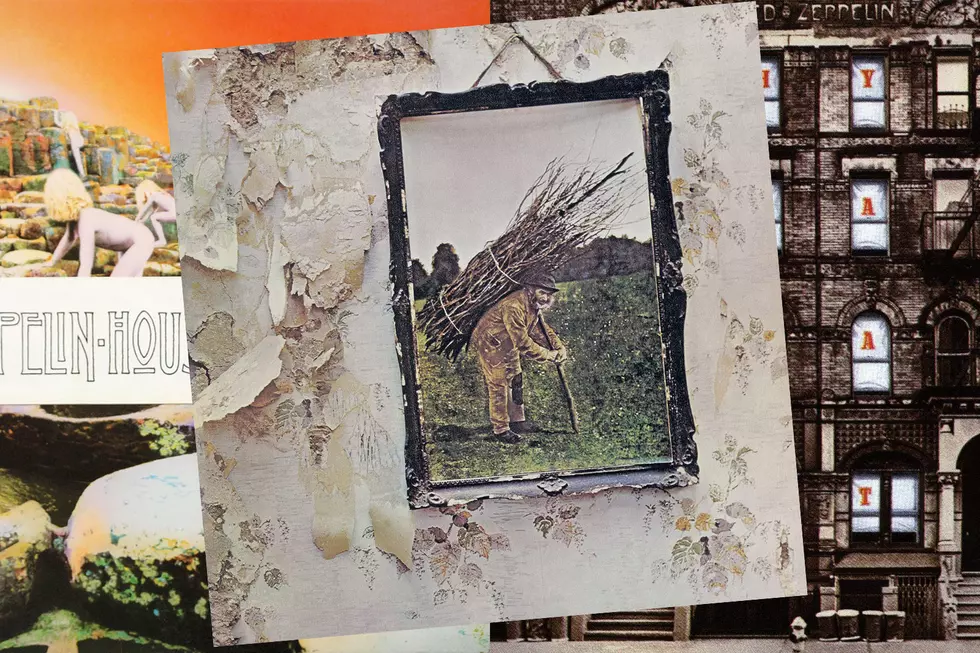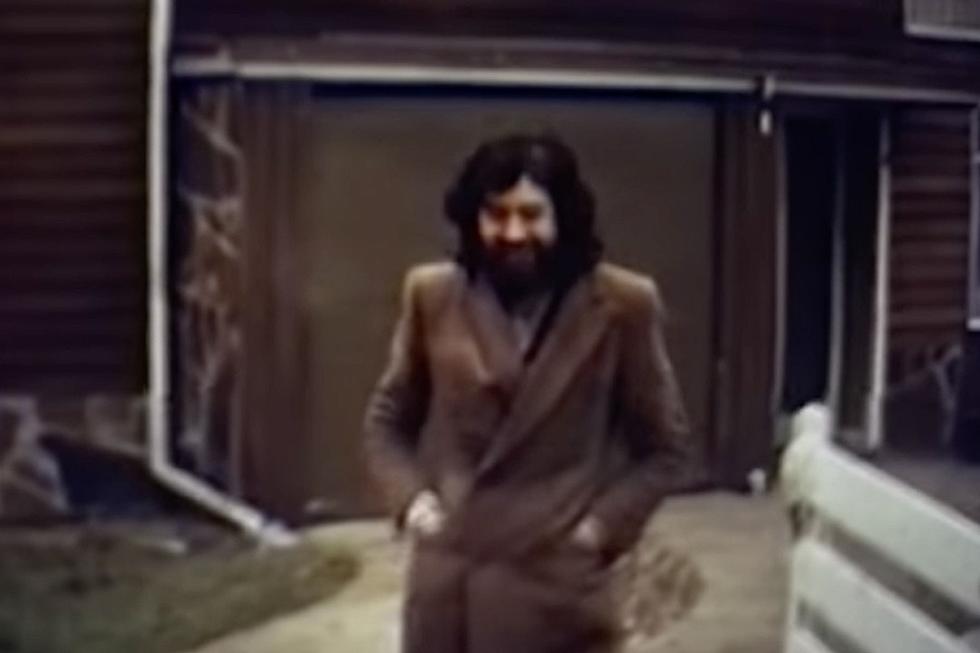
How a Harsh Recording Environment Inspired ‘Led Zeppelin IV’
Despite being one of the most grandiose-sounding rock records of all time, Led Zeppelin's untitled fourth album was born out of hardscrabble recording conditions.
They began recording the album colloquially known as Led Zeppelin IV in December 1970 at London's Basing Street Studios. Soon, though, they sought a change of scenery and decamped to Headley Grange, a dilapidated country house in the rural Hampshire, England, where they recorded parts of Led Zeppelin III.
Led Zeppelin were less than pleased to discover their once-pastoral utopia was dank and unwelcoming in the dead of winter. "We all ran in when we arrived in a mad scramble to get the driest rooms," bassist John Paul Jones told Mick Wall in his 2008 biography, When Giants Walked the Earth.
Guitarist Jimmy Page didn't seem to mind the conditions. "The rest of us moaned about being cold, but Jimmy was more concerned with creepy noises or flying fucking furniture," engineer Andy Johns told Wall.
They once again rigged up the Rolling Stones' mobile recording studio, which had previously been used for Led Zeppelin III. The unit, replete with empty egg cartons on the wall for soundproofing, was not the most technologically sophisticated setup, but it contributed to the air of spontaneity throughout the Led Zeppelin IV recording sessions.
One fateful jam session, which started as an attempt to blow off steam, yielded "Rock and Roll." Page attributed the song's development to the band members "all working together under those circumstances and having the freedom to be able to do that, not having to look at the clock, having the time to work on it when you really felt like you were connected to the work … never knowing quite what was round the corner."
Listen to Led Zeppelin's 'Rock and Roll'
Likewise, the distraction-free surroundings allowed lyrics to flow almost effortlessly through Robert Plant. "Jimmy and I just sat by the fire; it was a remarkable setting," Plant said of the night he wrote the lyrics to "Stairway to Heaven." "I was holding a pencil and paper, and for some reason I was in a very bad mood. Then all of a sudden my hand was writing out the words, 'There's a lady who's sure all that glitters is gold / And she's buying a stairway to heaven …'"
The band also used Headley Grange's cavernous interior to their advantage, helping John Bonham to achieve his titanic drum sound on IV's lurching, album-closing blues inferno, "When the Levee Breaks." Bonham had set up his kit in the Minstrels' Gallery, a three-story, cathedral-like hall. Two Beyerdynamic M160 microphones were hung from the staircase and pointed at Bonham's kit, with Johns compressing the sound in the mobile studio using an Italian echo machine called the Binson Echorec. Bonham's kick drum sounded so monstrous that Johns didn't even bother miking it separately, as is customary.
"I remember sitting there thinking it sounded utterly amazing," Johns told Wall. "So I ran out of the truck and said, 'Bonzo, you gotta come in and hear this.' He shouted: 'Whoa, that's it! That's what I've been hearing!'" Bonham wasn't alone: The intro drum beat on "When the Levee Breaks" has become one of the most sampled in music history, by artists such as the Beastie Boys, Eminem and Bjork.
Listen to Led Zeppelin's 'When the Levee Breaks'
The sonic benefits of Headley Grange may have not been purely of this world, though. "When we were recording at Headley Grange, I remember Jimmy telling us, 'I saw a ghost on the stairs last night,'" Johns later recalled. "I was like, 'Oh yeah, sure you did.' I mean, who knows? Jimmy was into all that sort of stuff.
"I was too busy making out with the cook in the attic," Johns added. "I had an attic bedroom, and the cook was quite nice. She came up to see me one evening. I think that’s the night Jimmy saw the ghost. Maybe it was some sort of weird vibe exuding out of my bedroom."
After finishing the basic tracks at Headley, Zeppelin went back to London to add overdubs at Island Studios in February 1971. At Johns' behest, he and Page took the tapes to Los Angeles' Sunset Sound for mixing. The results were disastrous, and the band members were most displeased with their engineer. "Basically, Andy Johns should be hung, drawn and quartered for the fiascos he's played," Page once seethed.
Page took it upon himself to fix the botched Sunset Sound mixes, delaying the release of Led Zeppelin IV from April to November 1971. Suffice to say, it was worth the wait. Bonham and Jones' earth-shaking rhythms lay the perfect foundation for Page's searing solos on "Black Dog" and "Stairway to Heaven," while Plant's piercing tenor soars above the tumult.
Led Zeppelin IV became the band's bestselling album by a long shot, moving a staggering 24 million units in the United States alone. Decades later, the album remains a hard-rock cornerstone, and a masterclass in performance, composition and production.
Led Zeppelin Albums Ranked
Was Jimmy Page Almost Part of a New Supergroup?
More From Classic Rock Q107
